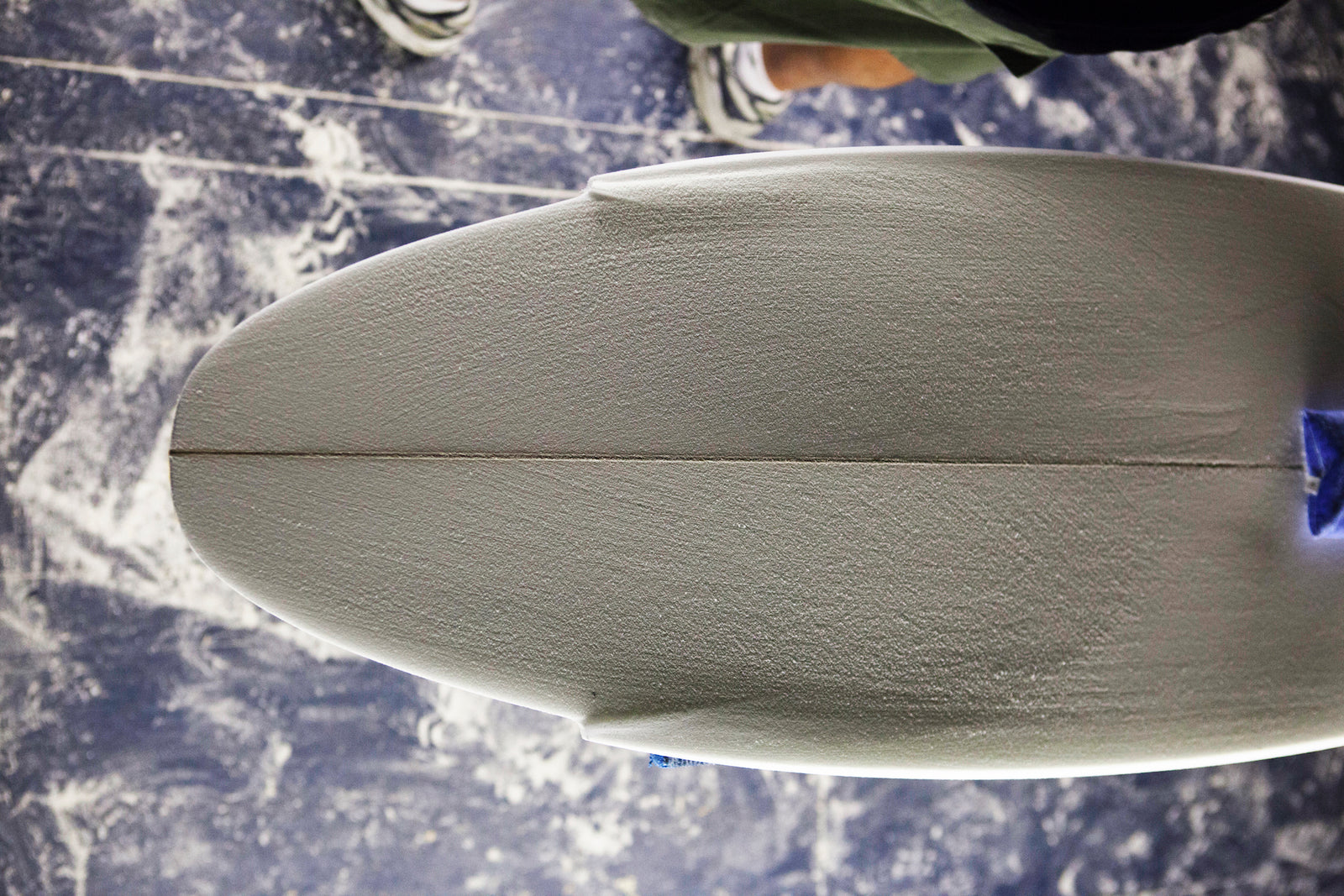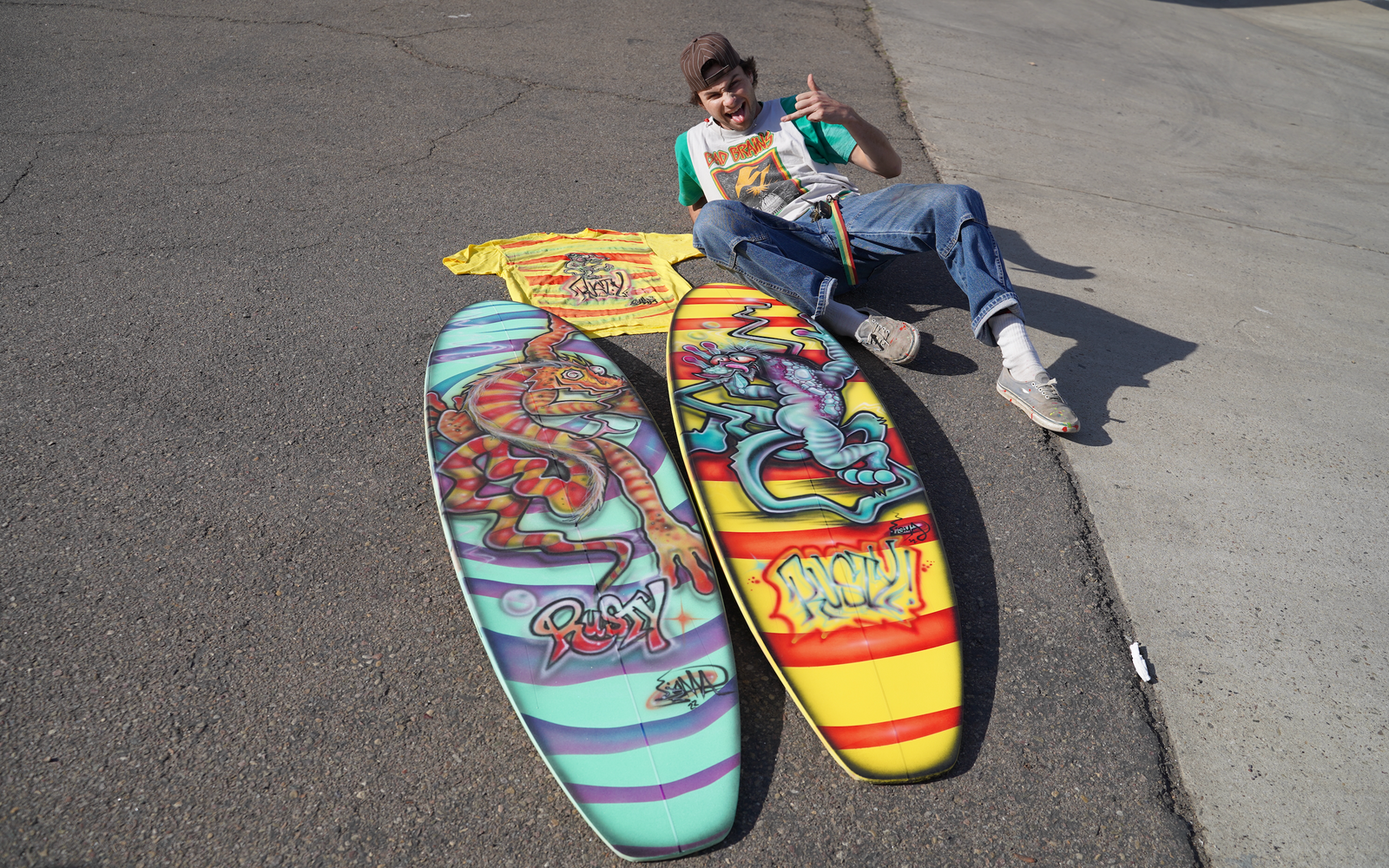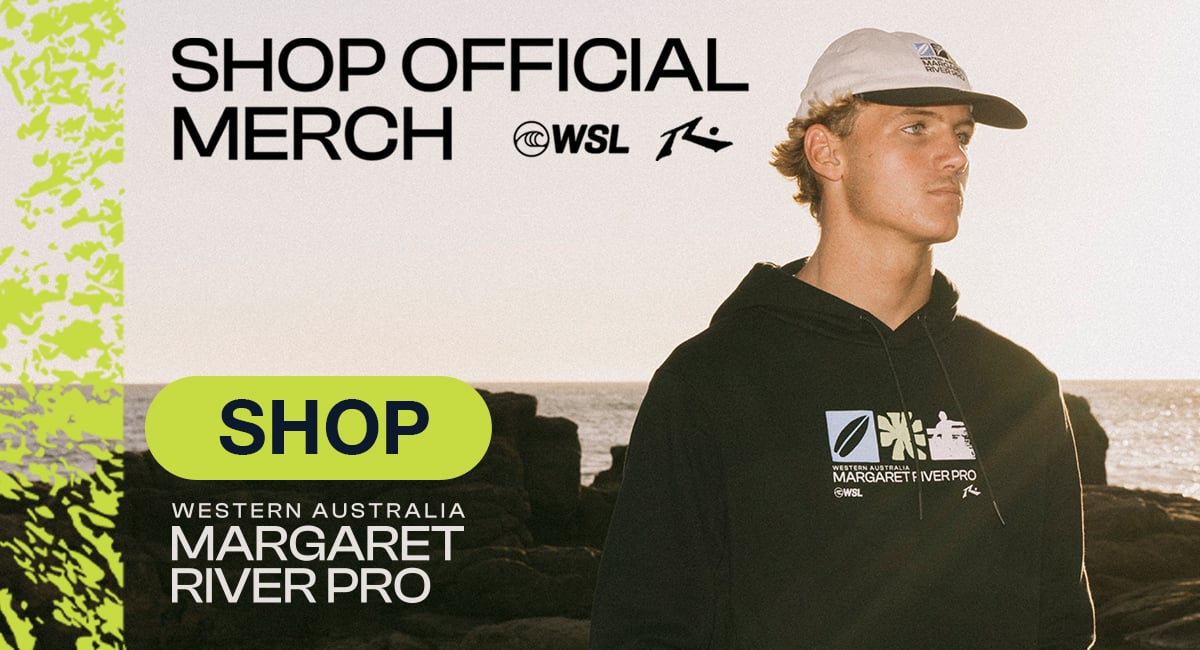Back in 2009 Rusty did a Talking Design series with the crew at Surfline where he authored a blog talking all things shaping. Fast-forward to today and all he talked about is still very relevant to today's shaping. In one of the articles Rusty wrote about the history and functionality of tails. Check out a snippet of it below:
I call the back third of a board the business end. Rocker, fins, foil, and outline curve all work in harmony, ideally, to provide the rider with a desired feel.
Questions about tail shape seem to get asked most frequently. Understandably so, because in the last decade or so there has been a proliferation of "new" tail shapes. Tails are easy to separate and the visual differences are easy to identify.
Today, what I find fascinating is, most of the short, "performance" boards that I build, and other designers boards that I look at, have remarkably consistent width numbers the last 18" of the board. Width at 6", 12" and 18" up from the tail are very similar between shapers and designs for boards that are ridden in everyday conditions.
All things being equal here's kind of a basic breakdown on tail differences:
 Square: Probably the grandfather of all tails, maximizes rail length and area in the last foot or so of the board. It adds stability, drive, more angular turns, quicker release, and less continuity in rail-to-rail transitions. They are used by some shapers as a small wave design and were used by some shapers in early big wave designs -- gun pioneers like Pat Curren used small square tails on guns.
Square: Probably the grandfather of all tails, maximizes rail length and area in the last foot or so of the board. It adds stability, drive, more angular turns, quicker release, and less continuity in rail-to-rail transitions. They are used by some shapers as a small wave design and were used by some shapers in early big wave designs -- gun pioneers like Pat Curren used small square tails on guns.
 Squash or rounded square: This is probably the most common small/medium wave tail shape. It offers a nice blend of area and curve. It became the go-to tail shape when three fins took over the world in the early 1980s. There were wide squash tails built early in the shortboard era. The problem with wide tails on single fins was that the wider the tail (block) the deeper the fin needed to be. The deeper the fin, the more the frontal drag. With three fins, it really enabled designers to go wider and shorter, moving area aft because of the hold and drive three fins brought to the game. The tail shape provides lift, support, and drive. The balance of release and smoothness or continuity depends on how rounded the corners are.
Squash or rounded square: This is probably the most common small/medium wave tail shape. It offers a nice blend of area and curve. It became the go-to tail shape when three fins took over the world in the early 1980s. There were wide squash tails built early in the shortboard era. The problem with wide tails on single fins was that the wider the tail (block) the deeper the fin needed to be. The deeper the fin, the more the frontal drag. With three fins, it really enabled designers to go wider and shorter, moving area aft because of the hold and drive three fins brought to the game. The tail shape provides lift, support, and drive. The balance of release and smoothness or continuity depends on how rounded the corners are.
 Bat tails: Take a squash or a diamond and invert the last inch of the tail. I did 'em in the early 1980s. They are all the rage for quads now. The area removed and little corners add some bite and help give the boards without a rear fin in the middle a little extra drive.
Bat tails: Take a squash or a diamond and invert the last inch of the tail. I did 'em in the early 1980s. They are all the rage for quads now. The area removed and little corners add some bite and help give the boards without a rear fin in the middle a little extra drive.
 Asymmetrical: Who says tails have to be symmetrical? My first board was an Ekstrom asymmetrical. I've built a few over the years and had a couple good riders swear by them. I made myself one last year and had a blast on it. Swallow wing on the frontside, roundtail on the backhand. Drive and release toe side, shorter, power arcs heelside.
Asymmetrical: Who says tails have to be symmetrical? My first board was an Ekstrom asymmetrical. I've built a few over the years and had a couple good riders swear by them. I made myself one last year and had a blast on it. Swallow wing on the frontside, roundtail on the backhand. Drive and release toe side, shorter, power arcs heelside.
For a full view of the article check it out on Surfline.





